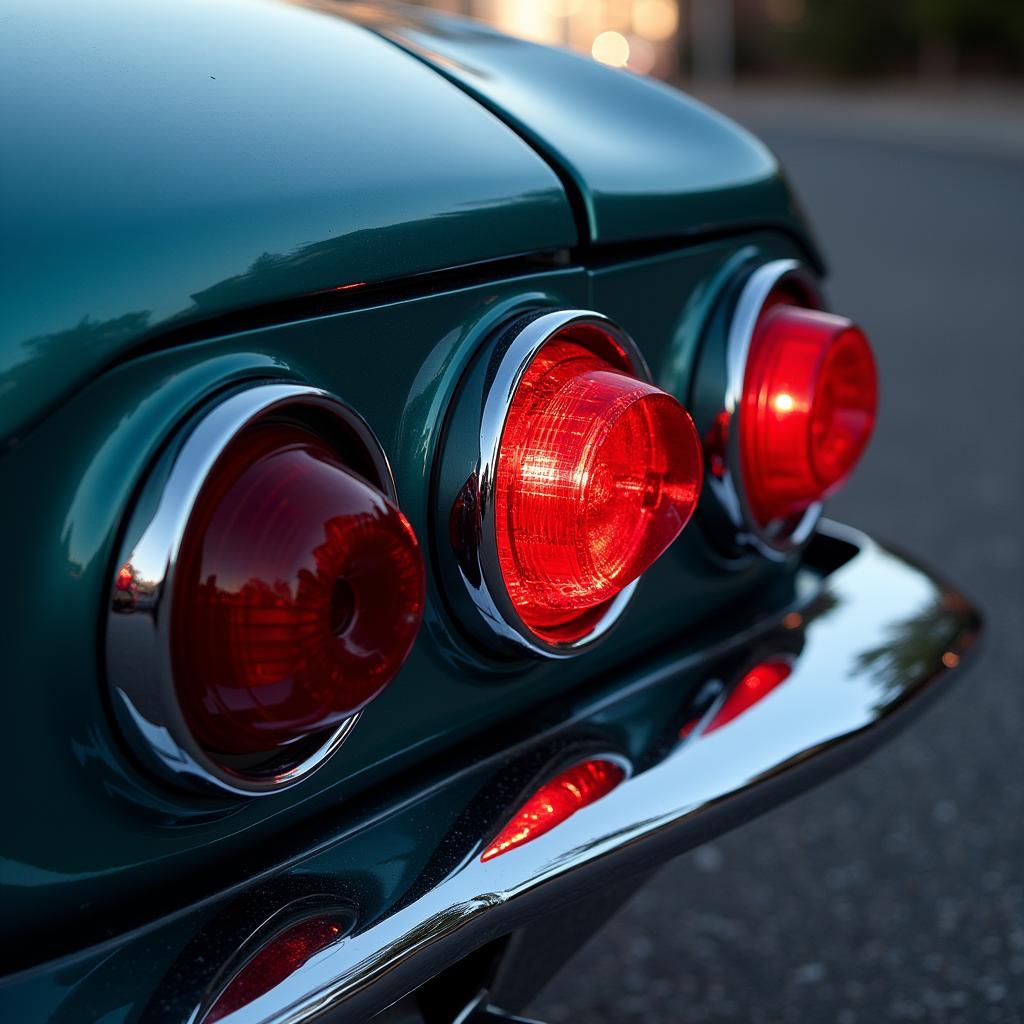Big car tail fins, often adorned with dazzling detail lights, were a defining design element of automobiles from the 1950s and 1960s. These iconic features, inspired by the jet age and rocket technology of the time, were more than just aesthetic flourishes. They became symbolic of prosperity, optimism, and the futuristic aspirations of a generation.
The Rise of the Tail Fin
The genesis of tail fins can be traced back to the 1948 Cadillac Series 62, which featured small, subtle fins inspired by the Lockheed P-38 Lightning fighter plane. This design element, initially intended to improve aerodynamic stability at high speeds, quickly captured the public’s imagination and ignited a design revolution. As the 1950s unfolded, tail fins grew increasingly larger and more elaborate, evolving from subtle hints to dramatic, sweeping statements.
This trend was fueled by a number of factors, including advancements in manufacturing techniques, a booming postwar economy, and a fascination with space exploration. Car designers, eager to capture the zeitgeist, embraced tail fins as a way to convey a sense of speed, power, and futuristic sophistication.
 1950s Cars with Prominent Tail Fins
1950s Cars with Prominent Tail Fins
The Role of Detail Lights
While the fins themselves were striking, it was the addition of detail lights that truly brought them to life, especially at night. These lights, often integrated into the trailing edges, tips, or even the bases of the fins, served both functional and aesthetic purposes:
- Enhanced Visibility: The lights increased the rear visibility of these large vehicles, making them more noticeable to other drivers.
- Design Element: Detail lights added another layer of visual interest to the tail fin design, creating unique light signatures that further distinguished each make and model.
- Style Statement: The use of colored lenses, multiple bulbs, and intricate patterns transformed tail lights into dazzling displays of automotive jewelry, reflecting the exuberance and optimism of the era.
The Decline and Legacy of Tail Fins
By the late 1950s, tail fins had reached their peak in terms of size and flamboyance. However, this trend began to wane in the 1960s as concerns about fuel efficiency, practicality, and even safety came to the forefront. The once-ubiquitous tail fin gradually shrank, becoming more integrated into the overall vehicle design.
 Modern Car with Tail Light Design Inspired by Classic Fins
Modern Car with Tail Light Design Inspired by Classic Fins
Despite their decline, big car tail fins with their intricate detail lights remain powerful symbols of a bygone era in automotive history. They are a testament to the creativity, ingenuity, and sheer exuberance of car designers in the mid-20th century, who dared to dream big and push the boundaries of automotive styling. Today, these classic cars continue to be celebrated and admired for their unique aesthetic and historical significance, serving as a reminder of a time when the open road and the future seemed limitless.

Leave a Reply